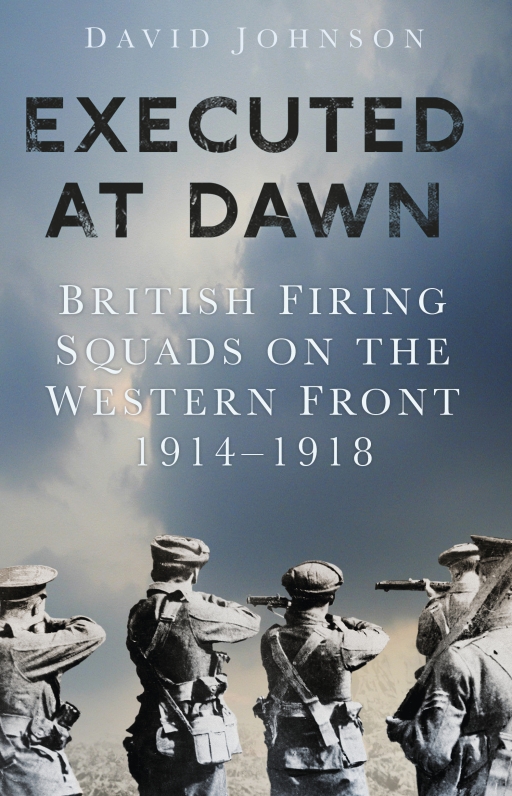Publisher’s Description:
‘Much has been written about the 302 British and Commonwealth soldiers who were executed for military offences during the First World War, but there is usually only a passing reference to those who took part – the members of the firing squad, the officer in charge, the medical officer and the padre. What are their stories? Through extensive research, David Johnson explores the controversial story of the men forced to shoot their fellow Tommies, examining how they were selected, how they were treated before, during and after the executions and why there were so many procedural variations in the way that the executions were conducted.’
Centenary News Review:
Review by: Eleanor Baggley, Centenary News Books Editor
During the First World War 302 British and Commonwealth soldiers were executed at the Western Front. Although this number seems unimaginably high to the modern reader, this is in fact a much smaller number than it could have been and amounts to roughly one in ten of those condemned.
Executed at Dawn explores the processes, procedures and ideas behind the death penalty. The book is divided into chapters which focus on particular aspects of the process and the people involved, for example the men who made up the firing squads and the army chaplains.
I found the chapter on army chaplains to be one of the most thought-provoking and well-written. Johnson discovers that the majority of the chaplains still supported the death penalty even after attending on the condemned and witnessing the executions. Johnson uses the example of Canon F. G. Scott from the Canadian Division who attempted to prevent the execution of Company Quartermaster Sergeant William Alexander (condemned for desertion). Scott’s attempts are unsuccessful, though he was ‘longing’ to save Alexander. Johnson quotes Scott’s reaction to Alexander’s death:
‘[H]ow deeply all ranks felt the occasion, and that nothing but the dire necessity of guarding the lives of the men in the front line from the panic and rout that may result through the failure of one individual, compelled the taking of such measures of punishment.’
Despite everything, Scott still did not oppose the legitimacy of the penalty.
Alexander’s execution is referenced again by Johnson as, despite his pleas for his eyes to be left uncovered and rather than being blindfolded as was the norm, he had a gas mask placed backwards over his head. This example highlights the discrepancies between executions and also suggests the horrors faced by the soldiers that made up the firing squads.
Johnson’s core argument here suggests that the death penalty on the Western Front was illogical. Having thoroughly exploring the rules and regulations surrounding the executions, Johnson concludes that there was a significant lack of any regulatory framework and huge variations and discrepancies between one execution and another. He further argues that the class prejudices dilute the main purpose of the penalty (to act as a deterrent) therefore undermining the Army’s own reasoning. Certainly the numbers do support this argument and raise questions as to why only one in ten of those condemned actually faced death.
Johnson closes the book firstly by looking at the move towards the abolition of the death penalty and secondly by examining the campaign for pardons for those executed (excluding those convicted of crimes such as murder). This is a very satisfying way to end such an informative study and is perhaps able to provide more of an insight into recent campaigns than works which pre-date the culmination of such campaigns.
In these final two chapters Johnson explores the arguments for and against granting pardons for those executed for desertion and cowardice, among other offences. One of the key arguments against suggested that pardoning these soldiers would be paramount to attempting to rewrite history. It would have been interesting for this argument to have been given more space and extrapolated further. Having said that, this is only a short book and delving deeper into the smaller elements would detract from the strength of the study as an introduction to such a controversial subject.
Though at times the writing can be a touch clunky and repetitive, Johnson’s argument and research are well laid out. It is balanced and well-supported with a range of evidence. This book would be an excellent starting point to the subject and includes references to works that go into further detail should it be of interest.
What do you think about this book or review? Please add a comment below.
